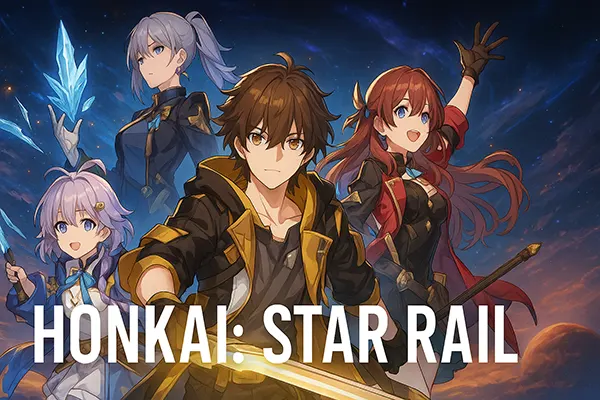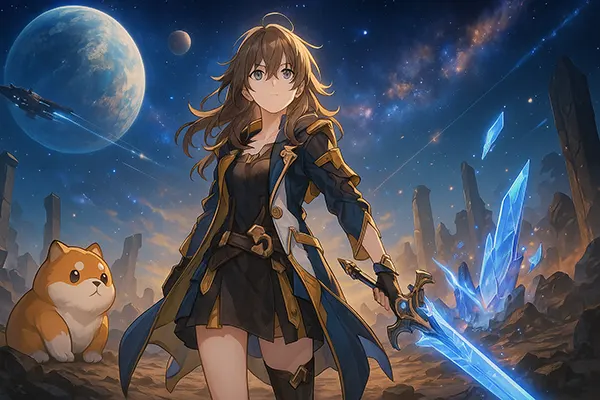
New players stepping into the universe of Honkai: Star Rail often feel overwhelmed by its vast array of characters, paths, and combat mechanics. Mastering the fundamentals of team composition and levelling up characters is crucial for progressing efficiently. This comprehensive guide provides a practical approach for beginners to build balanced teams and enhance their heroes for every stage of the journey.
In Honkai: Star Rail, building a team isn’t just about picking the most powerful characters. The game revolves around synergy between different roles and attributes. Teams typically consist of four characters, and the key is balancing damage, defence, support, and utility. Each character belongs to one of seven Paths (classes) and has an elemental type that determines their effectiveness against enemies.
Beginners should aim to have a mix of offensive and defensive units. A basic team might include one Main DPS, one Sub DPS, one Healer or Shielder, and one Support. Characters such as Dan Heng (The Hunt – Wind) offer strong single-target damage, while March 7th (The Preservation – Ice) can provide defensive shielding to allies. This balance helps players survive tough encounters without relying on pure firepower alone.
Another important consideration is the enemy’s elemental weakness. In tougher stages, especially the Simulated Universe and Forgotten Hall, tailoring your team to match enemy weaknesses increases efficiency. Avoid stacking characters with the same element unless required, as it can limit adaptability during multi-wave fights.
The success of any team depends on how well the characters’ skills complement each other. For example, using a support like Asta (The Harmony – Fire), who boosts allies’ speed and attack, allows DPS units like Sushang (The Hunt – Physical) to take more turns and deal more damage. On the other hand, a well-timed shield from March 7th or a heal from Natasha (The Abundance – Physical) can keep your damage dealers alive longer.
It’s also vital to understand Ultimate and Skill energy generation. Characters that generate more energy can use their Ultimates more frequently, which can be the difference between winning or losing a close fight. Including a character who provides energy regeneration or acts frequently helps in accelerating the team’s ultimate cycles.
Finally, synergy extends beyond skills—some Light Cones (equipment) and Eidolons (duplicates) offer passive boosts when combined strategically. Invest in Light Cones that align with the Path of your character and pay attention to passive bonuses unlocked through advancement.
Levelling characters is more than just increasing their level. To fully unlock a character’s potential, players need to focus on Traces, Ascension, and Light Cones. Traces improve active and passive skills and can significantly enhance a character’s combat performance. Prioritise upgrading core Traces—often the Basic ATK, Skill, and Ultimate—based on the character’s primary function in the team.
Ascension unlocks higher level caps and is achieved by farming materials from Calyxes or defeating specific bosses. These materials are also used in Traces, so plan ahead to avoid resource bottlenecks. Weekly bosses like Cocolia and Kafka drop unique materials required for higher-level upgrades, so it’s important to manage your Trailblaze Power efficiently.
Light Cones are akin to weapons and are specific to each Path. Investing in a high-quality Light Cone that matches the character’s class provides significant stat boosts. The best practice is to enhance Light Cones to at least Level 60–70 for mid-game progression, then push to Level 80 for key DPS units.
Resource scarcity is a common issue for new players. Prioritise levelling your core team of four rather than spreading resources thinly across many characters. This helps you break through early game content more effectively without grinding excessively.
Use Trailblaze Power daily for levelling materials and character upgrades. The Simulated Universe and Forgotten Hall also reward essential items like Relics and Stellar Jade. Focus on these modes once your team reaches around level 50 to maximise efficiency.
Relics (gear) come into play mid-game. Beginners should avoid investing heavily in Relics early on. Instead, use whatever decent sets you find and start farming specific sets at Level 40+. Key stats to look for include Crit Rate, Crit Damage, Speed, and ATK%, depending on your character’s role.

Here are some beginner-friendly team compositions using free and easily accessible characters. For a balance of offence and defence: Dan Heng (DPS), March 7th (Tank), Asta (Support), and Natasha (Healer). This team covers most enemy weaknesses and provides sustain for longer battles.
Another strong free-to-play combo includes Serval (AoE DPS – Lightning), Natasha (Healer), Tingyun (Support – Lightning), and Fire Trailblazer (Tank – Fire). This build performs well in the Simulated Universe, especially when dealing with multiple waves of enemies.
As you unlock more characters, experiment with combinations based on specific content needs. For instance, bring multiple AoE units for farming stages and focus on single-target setups for bosses. The game often encourages switching teams based on mission challenges, so adaptability is crucial.
Relics provide passive stat bonuses and are divided into four-piece and two-piece sets. For DPS characters like Dan Heng, sets like Eagle of Twilight Line or Musketeer of Wild Wheat (2-piece ATK% bonus) are ideal. Speed and Crit Rate substats should be prioritised to boost damage output.
Support characters benefit from sets like Messenger Traversing Hackerspace (increases speed) or Thief of Shooting Meteor (boosts break effect). Defensive units such as March 7th or Fire Trailblazer can utilise sets that increase DEF or Effect RES to survive longer in battles.
As a rule of thumb, always look at the primary stat of the body and feet relics—Crit Damage/Crit Rate for DPS, HP% or DEF% for tanks, and SPD for supports. Use substats as tie-breakers when choosing between relics.